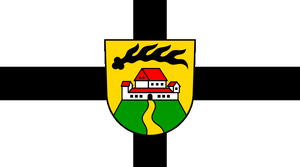Stonne: Difference between revisions
mNo edit summary Tag: 2017 source edit |
mNo edit summary |
||
| Line 133: | Line 133: | ||
[[Category: Yonderre]] | [[Category: Yonderre]] | ||
[[Category: Donne]] | [[Category: Donne]] | ||
[[Category: Cities]] | |||
[[Category: Cities and towns in Donne]] | [[Category: Cities and towns in Donne]] | ||
[[Category: Cities and towns in Yonderre]] | [[Category: Cities and towns in Yonderre]] | ||
[[Category: Sub-national Regions in Ixnay]] | [[Category: Sub-national Regions in Ixnay]] | ||
[[Category: Canonical Article]] | [[Category: Canonical Article]] | ||
Revision as of 15:12, 1 September 2022
Script error: The module returned a nil value. It is supposed to return an export table.
Stonne
Stohn (Gothic) | |
|---|---|
Town | |
 | |
 Location of Stonne within Yonderre | |
| Nation | |
| County | |
| Barony | |
| Settled by Goths | Antiquity |
| Raised to market town | c. 870 |
| Raised to Barony capital | 1474 |
| Population (2036 estimate) | |
| • Total | 65,242 |
| Demonym(s) | Stonnic Stonnics (plural) Stöhner (Gothic) |
Stonne (Gothic: Stohn) is a large town in the County of Donne, Yonderre. Is is the capital of the eponymous Stonne Barony and the unofficial capital of the Black Forest. As of 2036 it was home to an estimated 65,242 people who live in the medieval town centre or in its suburbs. Stonne is a town of rich and varied history, having been of great importance to the Grand Chiefs of Don in the middle ages because of the silver mined in the nearby Loneur valley and the centre of the Black Forest glass-making industry.
History
Because the area around Stonne has been inhabited since before recorded history, there is no clear date as to when the town was founded. It is known from several later chronicles that Stonne recieved market priviliges around 870, . The Church is known from written sources to have been completed in 1339. Stonne was captured after only light skirmishing in 1474 by Knights of the Order of the Obisidan Sparrow towards the very end of the Conquest of Joanusterre. Following the crusader takeover, Sir Prise de Blaincour became the first Baron of Stonne, building his castle atop Stonne Hill to solidify his control over the town.
The town was partially destroyed during the decisive Battle of Stonne that ended the Yonderian Peasants' War in 1643 when the Black Host of Fabian Löwenschiold made their last stand there. Houses damaged beyond repair, mostly due to fires caused by the battle, were demolished and replaced with contemporary buildings, while those that could be repaired more easily were preserved, notably the Church and Castle. Silver mining in the nearby Loneur valley followed by minting inside the town itself caused Stonne to bloom, making it one of the most important towns in the County of Donne. The town also continued its important function as a market town, working as a crossroads between Yonderre and foreign lands westwardly.
Stonne lost its importance gradually from the beginning of the 18th century and onwards as shipping overtook the role of trade from land-based caravans. Growth of the town stagnated and came to a standstill as urbanization began elsewhere in Donne as a result of the industrial revolution. Stonne remains important in modern times as a town of great historical and cultural significance and remains the centre of the Black Forest glass-making industry.
